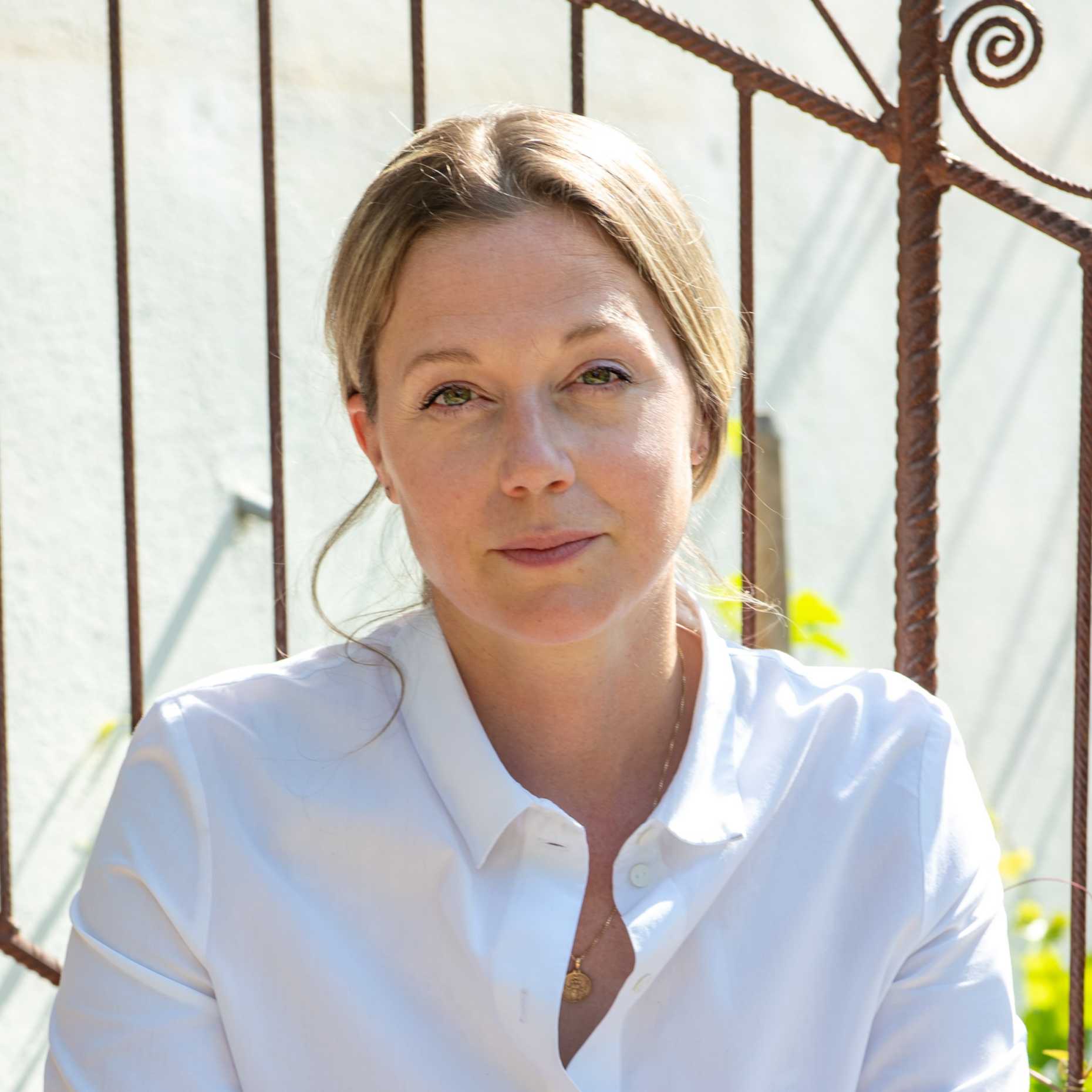The bridge builder
What does a life scientist do at the Department of Computer Science? Martina Baumann is a science coordinator and supports her group in setting up complex research projects with sensitive medical data, among other things. She is an expert at mediating between internal and external bodies

Martina Baumann prefers to work at the interface of different disciplines. As Scientific Coordinator in the Biomedical Informatics Group, she connects several of them: research and law, science and ethics, coordination and communication, informatics and medicine. Baumann enjoys this very much, although her work is sometimes difficult to put into words. "My children say, 'Mummy writes to explain to people what other people do'," she smiles.
Baumann was drawn to different worlds at an early age. "My choice of studies was a neck-and-neck race between German studies, philosophy and biochemistry," she recalls. Biochemistry won, and she enrolled at ETH Zurich. However, she did not forget her love of language. "I took all kinds of courses on topics such as presenting, publishing, communication and management, and attended lectures on English literature at the Department of Humanities, Social and Political Sciences on the side," she explains.
After graduating, Baumann did a doctorate in materials science at ETH – another interdisciplinary field. It was there that her two worlds, that of natural sciences and language, collided for the first time. "I had a lonely dissertation. I spent most of my time in the basement at the atomic force microscope and the electron microscope. That's when I realised, as much as I love research, I also need language, people and communication."
Unexpectedly, Baumann found a job at a communication agency specialising in the medical field just after completing her doctorate. In the hectic everyday life of the agency, she learned the craft of communication from scratch. But soon the researcher and communicator was drawn back to ETH, and she joined the ETH Foundation as a fundraiser. "I came into contact with the entire range of ETH topics and had an insight into all departments," she recalls. "There I realised that I could combine my passions for language and research even more closely if I came back to work at the heart of research."
New legal and ethical territory
She found the right position for this in the Biomedical Informatics Group at the Department of Informatics, led by Professor Gunnar Rätsch. What exactly is so special about the job profile of a scientific coordinator? "The versatility and unpredictability," Baumann replies. The list of her tasks is long: "I assist in writing research proposals, take care of internal and external communication in the group and coordinate projects."
Project coordination in particular is time-consuming. "In biomedical informatics, we work with medical data," she explains. "Most projects are interdisciplinary collaborations with partners from the health sector. That means the project partners each bring to the table a different research background as well as a different mindset. In addition, the nature of research at ETH Zurich is that our projects are novel and/or very complex." This means that for many projects, the group does not have clear guidelines on how to deal with the highly sensitive data, and it first has to develop them –together with a wide variety of stakeholders, both internal and external.
Being at the intersection of so many different topics and interests, Martina Baumann feels at home. "I love analysing and understanding things and passing on my knowledge," she says. In research projects, she mediates between computer scientists on the one hand and medical scientists on the other. In addition, there are ETH units such as Legal Office, Data Protection, Ethics Commission and Purchasing, as well as all the corresponding departments on the side of the research group's partners, such as hospitals, which all have to be linked together and provided with information. If a project is financed by third-party funds, then applications, regular reporting and final reports are also part of the communication requirements.
Preserving knowledge
Only a few research groups at ETH Zurich currently employ scientific coordinators. However, this need will soon increase, Baumann predicts. "Research administration is complex. Interdisciplinary medical research in particular needs careful consideration and must be well thought out from a legal, ethical and human point of view," she explains. Negotiating these details with all collaborators and relevant bodies and writing research proposals is becoming more and more time-consuming. If the professor has to do all this on his or her own, it takes up a lot of time, which is then no longer available for research, supervision and teaching."

“Research administration is complex. Interdisciplinary medical research in particular needs careful consideration and must be well thought out from a legal, ethical and human point of view.”Martina Baumann, Scientific Coordinator in the Biomedical Informatics Group
As a technical-administrative employee, Baumann also has the advantage that her accumulated experience remains with the research group permanently, whereas doctoral students and postdocs usually leave ETH Zurich after only a few years. Colleagues even describe her as a "living reservoir of ETH knowledge". "I hope that more and more professors at ETH will realise that scientific coordination could become an indispensable role profile," notes Baumann. "The work also needs a lot of creativity to find new solutions and break new ground. I like that a lot."
Although she works as a life scientist in computer science, Baumann feels well integrated and in good hands at ETH and the department. "I don't know how to program, but I understand the medical part of research very well." She has already toyed with the idea of diving deeper into computer science now that she is so close to it, but that would mean sacrificing science communication – which she certainly doesn't want to do. "Traditional science communication is often a bit euphoric," she explains. "With medical communication, you have to take into account the expectations of patients." The group has sometimes been asked for help by patients after large projects in cancer research. "I am constantly training myself to be even more competent in dealing with such requests," says Baumann.
Martina Baumann has found her place: at the interface between science and language, between the academic world and the public. With her experience gained from her unusual career, her flair for problem solving and analytical thinking, and above all her love of communication and people, she also wants to help others: in 2022, in addition to her employment at ETH Zurich, she also started her own coaching business.